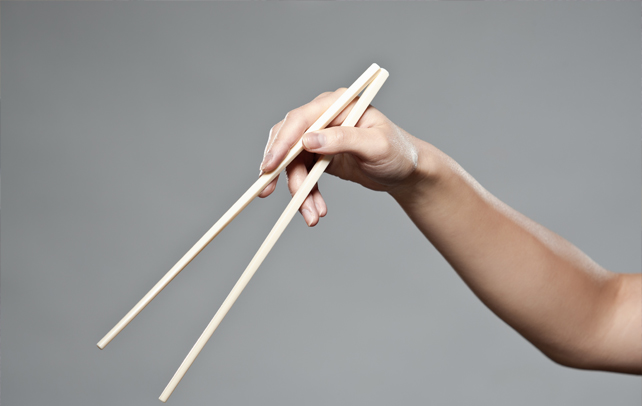How To Introduce People

The opportunity for two people to familiarize themselves smoothly lies in the art of introduction. It’s not just about stating names and walking away; developing a sense of connection, familiarity and ease is primary when you introduce people to each other. The etiquette for introducing people can vary a lot between different settings and purpose. An informal environment surely wouldn’t require an “I’m honored to introduce you to…” unlike a formal meet! But whatever it is, it should be carried out gracefully with utmost confidence and respect. Keeping it simple and providing basic information without boring or embarrassing either of the sides is important. Whether you are working towards creating business contacts or being the perfect wingman to your friend, get the art of introducing people right and they’ll definitely thank you if the acquaintance turns out to be a life changing one. Go ahead and read on the ways of introducing someone to create the right impact.
Introducing People The Right Way
There are some basic protocols you need to follow while introducing people. If it’s being creative that you are looking forward to then, of course, make sure you know both the people well enough. For the rest of the deal, read on!
Who & To Whom?
The first step in making introductions is realizing who should be introduced to whom. The basic rule is to introduce the older or the higher ranking person first. If both these criteria can’t be used, then the person’s name who you know better should be taken first. Usually in a business situation, the clients name should be taken first while at a party, the guest of honor should be named first to the guests. If it is outside professional atmospheres then gender distinction should be taken into consideration. A man should be introduced to a woman first out of sheer respect. You should look directly at the person you are speaking to and make eye contact with them.
Introductory Phrases
You should speak clearly in a friendly and pleasant tone. Phrases like “I’d like to introduce…”, “May I introduce…” should be used before you take the person’s name. Unless you are a part of an informal setting, appropriate titles like Dr, Rev, Mrs., and Mr. should be offered in the introduction and full names should be used It shows that you are aware of the details of the person you are introducing.
The Good Old Body Language
Exuding a good body language is very important. It shows a lot of confidence and it is a proven fact that a good body language is directly related to the authenticity of information. Shrugging or slouching implies that you are uninterested and lack genuine interest. Hence, a confident individual directly translates into a great introduction.
Conversation Starters
Try to introduce a conversation starter before you plan to scoot and leave the two parties alone with each other. A springboard to launch them into a conversation is important. The best way is to mention a topic which is common to both the sides. If possible, a neutral topic should be considered and breaking into a serious discussion should be stayed away from. A debatable topic revolving around religious or political grounds should be avoided to be on the safe side. Conversation starters can revolve around a few topics like:
- Similar interests e.g. Chung, I know how much you love Germany. My friend Nickie actually just got back from Germany last week.
- Their hobbies e.g. Sania, this is Mahesh. Like you, he has also been playing tennis for years.
- Their talents e.g. Frodo, I’d like you to meet Samwise. Sam is an incredible gardener.
- An interesting fact e.g. Robin, this is Ted. Did you know that Ted actually licked the Liberty Bell?
- A professional relationship starter e.g. Mellissa, I would like you to meet Subramani Iyer, our Systems Engineer. Subramani, Melissa Hoffmann is from Marketing. She is the Account Manager for Wal-Mart.”
- Saying something nice e.g. Yota, I’d like you to meet Zhyan. Zhyan is by far one of the funniest people I know.
- Contextualise by explaining the two friends, their relationship with you e.g. Tara is my Niece; Colonel Coleman is a distinguished war veteran who served with your Uncle…”
Group Introductions
Making group introductions is obviously different from the one to one introductions. You need to spend more time on the new person you are introducing to the group. If it’s a small informal group, just the names and a general introduction are good enough to avoid disruption of the current group activities and it is less time consuming. For larger formal groups, it makes more sense to take the person around the group and introduce each person individually.
Some Serious “Don’ts” Of Introductions
- Using “should”, “must” etc in your introductions may come across as too pushy, bossy or impolite. For e.g. introductions like “You must meet” or “You should have a lot to talk about” must be avoided.
- Using phrases like “this is” can come across as a bit too informal and doesn’t really convey the importance of the person.
- Forcing someone to meet a person, when they’ve made it clear that they are not keen on doing so, is not acceptable. Going out of the way to be a healer is rarely appreciated.
- While introducing, subjects like divorce, job loss, illness, religion, etc, should be avoided. They can end up leaving people feeling uncomfortable and unsure about what to say next.
A right introduction is always very important. A simple ‘Peter meet Jane, Jane meet Peter’ doesn’t do much but create awkwardness. So, be a better people’s connector and by establishing interesting conversations, you too can master the art of introductions.












